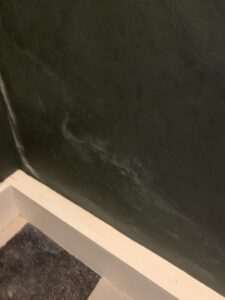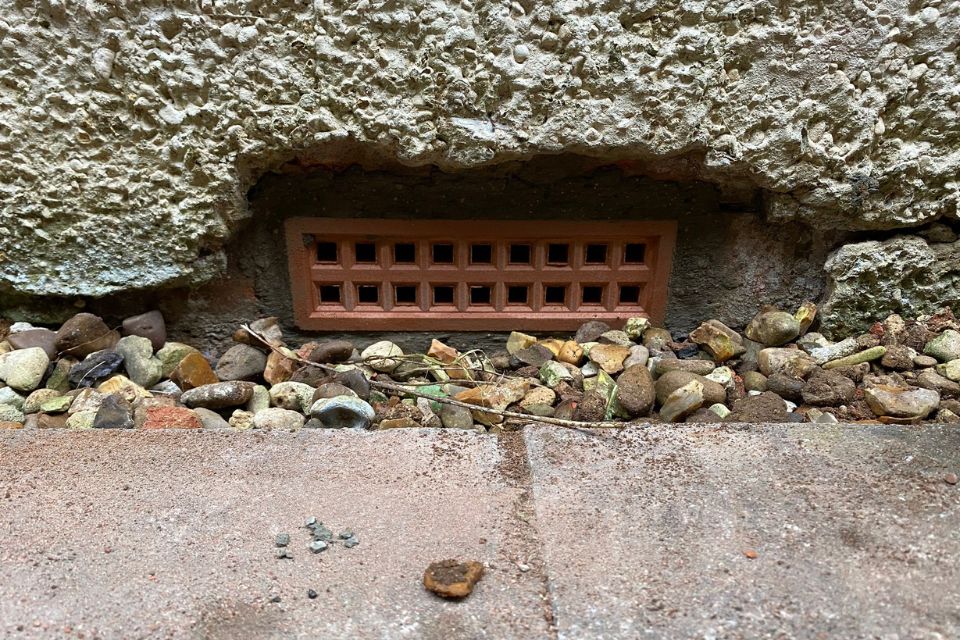Blocked or damaged airbricks can be the cause of quite substantial damp problems in your home, if you don’t get it rectified, you could be risking major trouble…
Three signs of damp problems from blocked airbricks:
- Puddles outside
- Salt contaminated plaster – white residue on your internal walls
- Bouncy floorboards – near to the walls
We have seen numerous clients where there have been complaints of black mould, peeling wallpaper, damp plaster, bouncy and rotten floorboards and musty smells in the basement. All due to the airbricks being blocked or compromised, and the homeowner or tenant not noticing.
How do airbricks work?
There are two main ways airbricks may be used to alleviate damp problems…
The first is a remedial measure for rooms that suffer insufficient ventilation and show signs of condensation or black mould – sometimes in areas that are not so obvious such as behind cabinets.

More commonly though, airbricks are a vital method of ventilating the sub-floor void of suspended wooden floors in period homes, and rather than allowing moisture to leave the room from above the floor, allow moisture to escape from the space beneath the floor.
Wood is hygroscopic, meaning it attracts moisture, which can come from the nearby ground or basement walls below the level of the dampproof course.
Water vapour can become trapped as the moisture evaporates into the subfloor void and if there is no means of escape, condensates to become water, resulting in rising damp.
This rising damp can adversely affect the floor joists that are supporting your suspended wooden floor, and that’s when you will notice bouncy or squeaking floors…
At the same time, you may notice white marks on the walls where moisture has evaporated and the salt deposits from the ground water remain. This will continue getting damp as these salts are also hygroscopic and attracts moisture from the atmosphere, creating a vicious cycle.

To prevent damp problems like this happening, it is imperative that you check your airbricks on a regular basis to ensure there is no rubble or debris from garden works or falling autumn leaves compromising the effectiveness of the ventilation system. And don’t be tempted to block airbricks from indoors to control draughts!
If you have discovered any of these signs of rising damp, due to blocked or broken airbricks, call in your local damp specialist for advice. We can recommend and replace dilapidated sub-floor ventilation systems with modern versions and replace any damaged structures of your home.

